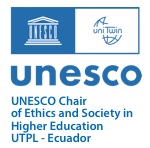Analysis of the social in the work The funerals of the Big Mama by Gabriel García Márquez
Abstract
In this work the social situation of the society in the short story of García Márquez is researched in one of his best-known short stories, the story «Los funerales de Mama Grande » of 1962. In it, all the components of the society fabulated by the author can be taken as a sample of the Latin American societies of the first half of the 20th century, with strong feudal roots and with marked folkloric and popular accents. The analysis of the background is mediated by the idea that the sample of this society is held in the characteristics such as: the absolute matriarchy exercised by «the Mama Grande», the role of the Catholic religion and its symbols as the foundation for the reigning and organized faith of postcolonial civilization, and popular culture as a feature that complements the characteristics of feudalism that stratifies and assembles the general and particular fabric of that society.
Downloads
References
García Dussán, Éder (2015). «Reflejos de la identidad social en la cuentística de Gabriel García Márquez». Estudios de Literatura Colombiana 37: pp. 77–100.
García de la Concha, Víctor (2007). «Gabriel García Márquez, en busca de la verdad poética». En Cien años de soledad. Madrid: Real Academia Española y Asociación de Academias de la Lengua Española.
García Márquez, Gabriel (1982). Nobel Lecture: La soledad de América latina. Nobelprize.org. Disponible en: http://www.nobelprize.org/nobel_prizes/literature/laureates/1982/marquez-lecture-sp.html
García Márquez, Gabriel (1982). «La Marquesita de la Sierpe». En: Entre Cachacos, Obra periodística, volumen VIII. Bogotá: La Oveja Negra.
García Márquez, Gabriel (2001). Los Funerales de la Mamá Grande. Buenos Aires: Editorial Sudamericana.
García Márquez, Gabriel (2014) La mala hora. Bogotá: PRHG.
Samper, Ernesto (1989). «Entrevista a Gabriel García Márquez». Semana 358: pp. 14–20.
Vargas Llosa, Mario (1971). García Márquez: Historia de un deicidio. Barcelona: Barral Editores.
Copyright (c) 2017 © Analysis

This work is licensed under a Creative Commons Attribution-NonCommercial-NoDerivatives 4.0 International License.








